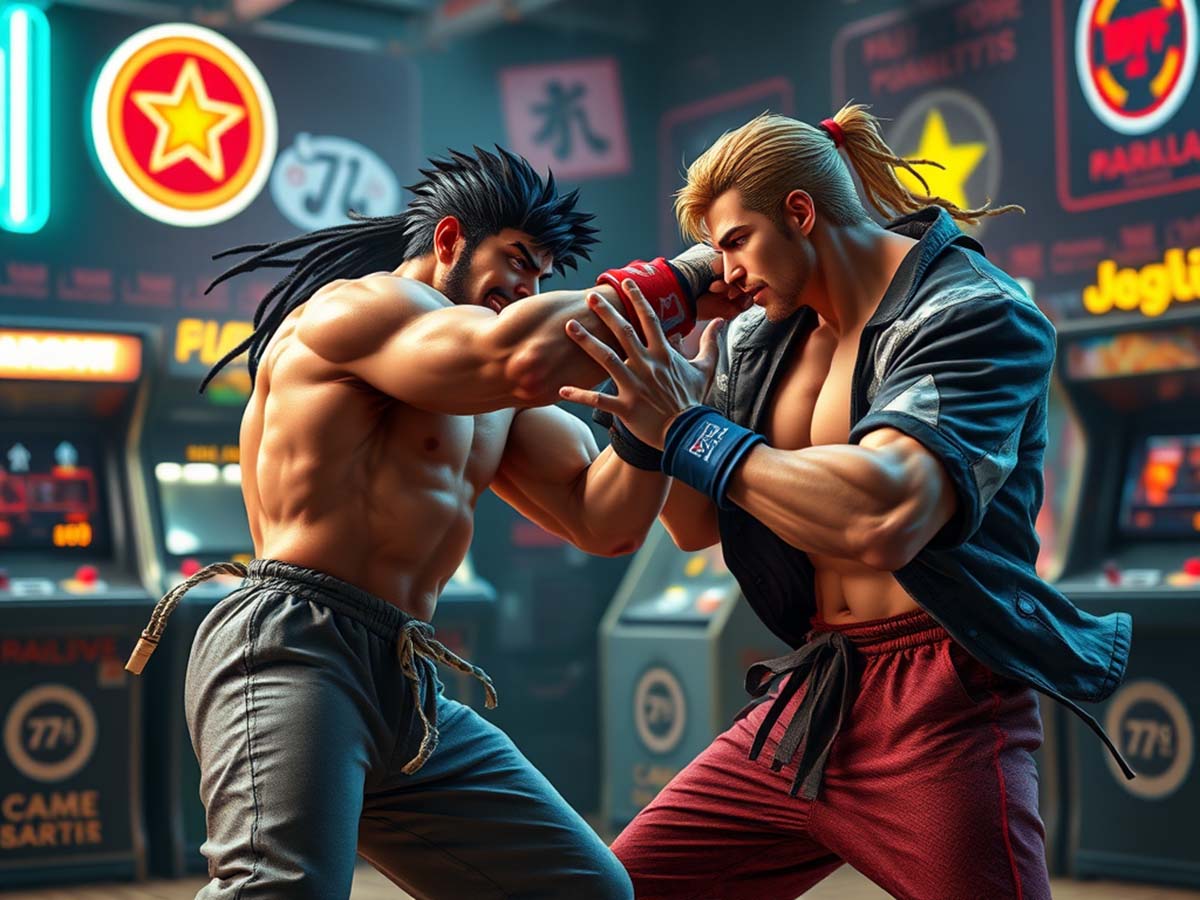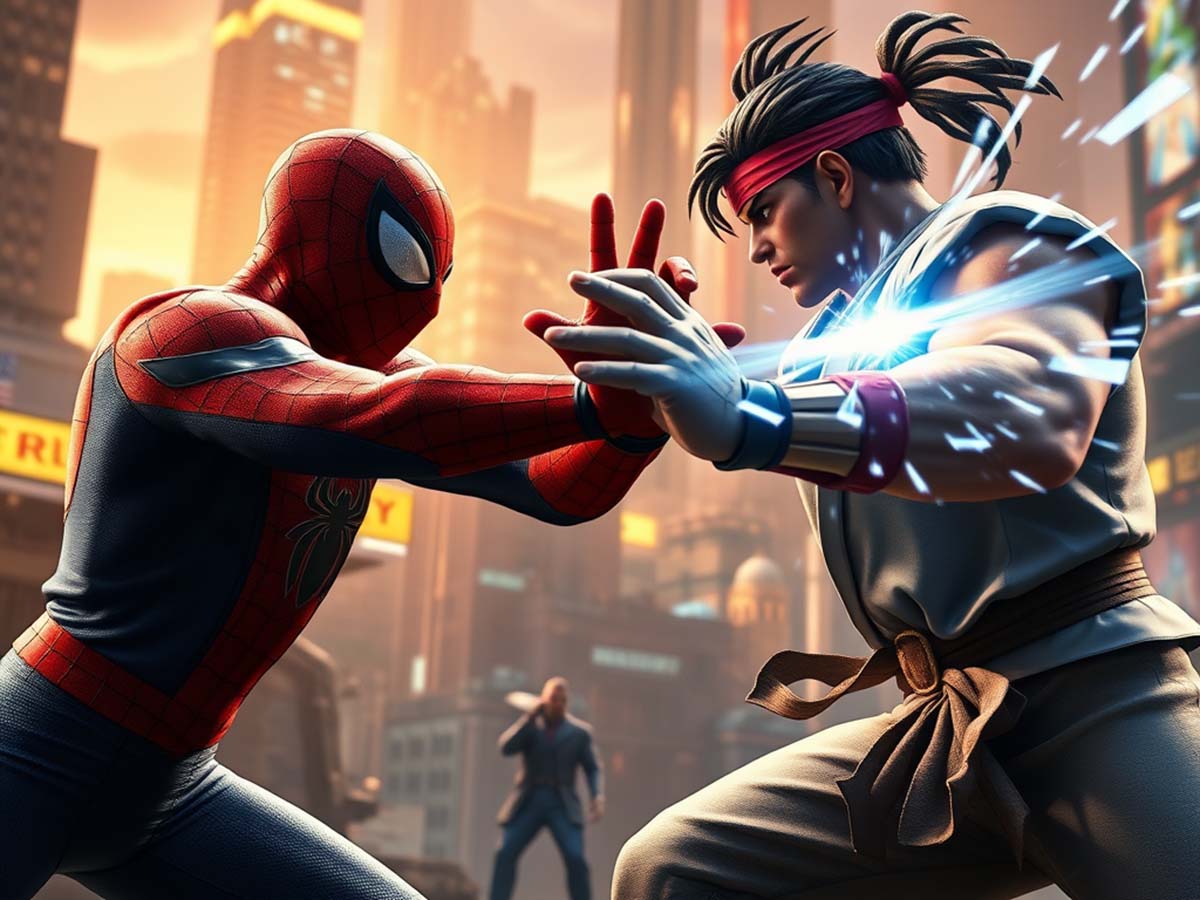How Fighting Games Changed the Gaming Landscape
Fighting games have played a major role in shaping the video game industry. With their fast-paced combat, strategic mechanics, and competitive nature, they have remained a fan favorite for decades. The genre has undergone significant transformations, from pixelated arcade classics to visually stunning, tournament-driven e-sports titles.
The appeal of fighting games comes from the thrill of one-on-one battles. Unlike other genres that rely on teamwork or open-world exploration, fighting games focus on skill, reflexes, and mind games. Players must learn combos, counterattacks, and movement strategies to outplay their opponents. Over time, these mechanics have evolved, incorporating deeper strategy and technical gameplay.
The Birth of Fighting Games
Before fighting games became a household name, early developers experimented with competitive combat mechanics. The late 1970s and early 1980s saw the first attempts at one-on-one fighting, though these early titles were basic and lacked the depth seen in modern games.
Street Fighter and the Rise of Arcade Culture
In 1987, Capcom released Street Fighter, introducing special move mechanics that set it apart from other arcade games. While the game had a learning curve, it laid the groundwork for what would become one of the most influential franchises in gaming history.
Four years later, Street Fighter II changed everything. The game introduced a cast of diverse characters, each with unique fighting styles. For the first time, players could select from a roster instead of playing as a fixed protagonist. This breakthrough made matches feel more dynamic and strategic. The introduction of combos allowed skilled players to chain attacks for devastating effects, setting a new standard for the genre.
The success of Street Fighter II led to a surge in arcade popularity. Players would gather in local arcades, placing their quarters on the cabinet to challenge the current champion. This competitive environment shaped the way fighting games were played, turning them into a true test of skill.
The Impact of Mortal Kombat
While Street Fighter II emphasized precise mechanics, Mortal Kombat introduced a more brutal, cinematic approach. Released in 1992, this game shocked audiences with its digitized character models and over-the-top fatalities. It became a cultural sensation, attracting both praise and controversy.
The game’s violence led to debates over video game content, ultimately contributing to the creation of the ESRB rating system. Despite this, Mortal Kombat continued to evolve, introducing deeper mechanics and an expansive storyline that expanded its fanbase beyond just arcade enthusiasts.
Evolution in the 3D Era
With advancements in technology, fighting games entered a new era. The shift to 3D environments allowed developers to introduce fresh mechanics that changed how players approached combat.
Tekken and Virtua Fighter Change the Game
The early 1990s saw the arrival of Virtua Fighter and Tekken. These games broke away from traditional 2D fighting mechanics by allowing movement in three-dimensional space. This change forced players to think beyond simple left-and-right movement, adding new defensive options like sidestepping.
Tekken became a defining series in the 3D fighting game genre. Unlike other titles that relied on quarter-circle motions for special moves, Tekken introduced a button-based attack system mapped to different limbs. This system allowed for deep customization, as players could create unique combos based on precise timing and execution.
The Influence of Soulcalibur
Weapon-based combat became a focal point with Soulcalibur, released in 1998. This game refined the 3D movement system and introduced the “eight-way run” mechanic, which allowed characters to move freely in any direction. The game’s fluid controls and well-designed roster made it a standout title in fighting game history.
Soulcalibur also set a new standard for visuals, featuring some of the best graphics of its time. Its ability to tell a compelling story alongside intense battles helped expand the genre’s appeal beyond hardcore players.
The Online Era and E-sports Growth
The introduction of online gaming changed the way people experienced fighting games. No longer limited to arcades or local matches, players could now compete against others worldwide. This shift helped expand the competitive scene and allowed the fighting game community to thrive on a global scale.
Street Fighter IV Brings a Revival
By the mid-2000s, arcade gaming had declined, and many believed fighting games had lost their mainstream appeal. However, Street Fighter IV, released in 2008, reinvigorated the genre. The game brought back classic mechanics while introducing modern features that made it more accessible to new players.
One of the key innovations was the Focus Attack system, which allowed players to absorb hits and launch counterattacks. This mechanic added an extra layer of strategy, rewarding players for reading their opponent’s moves. Online matchmaking further helped players improve their skills, leading to a resurgence in competitive fighting games.
The Impact of E-sports
As online play became more refined, fighting games found their place in e-sports. The Evolution Championship Series (Evo) became the biggest stage for competitive play, featuring legendary matches that defined the community. Titles like Super Smash Bros., Tekken, and Guilty Gear built dedicated followings, with professional players competing for significant prize pools.
Streaming platforms like Twitch further fueled the scene’s growth, allowing fans to watch top players compete in real-time. This accessibility helped new audiences engage with the genre, ensuring fighting games remained relevant in modern gaming.
Modern Fighting Games and Accessibility
Developers have continued to refine fighting games, making them more approachable while maintaining the depth that veteran players expect. Balancing accessibility with high-level play has become a priority.
Rollback Netcode and Online Play
One of the most significant advancements in recent years has been the implementation of rollback netcode. Unlike traditional delay-based netcode, which could lead to laggy matches, rollback netcode provides smoother online experiences. More fighting games have embraced this technology, making online play more competitive and reliable.
Expanding the Roster of Characters
Modern fighting games include diverse character selections, allowing for varied playstyles. Games like Guilty Gear Strive and King of Fighters XV introduce new mechanics while keeping classic elements intact. These innovations ensure that both casual players and hardcore fans find enjoyment in the genre.
What the Future Holds for Fighting Games
The fighting game genre continues to evolve with technological advancements and growing e-sports recognition. Developers are experimenting with fresh ideas, whether through interactive story modes, cross-platform play, or AI-assisted training tools. As gaming communities remain engaged, fighting games are set to remain an essential part of the industry.


